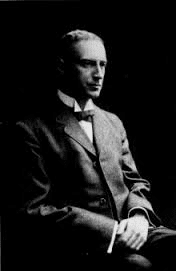The Tragically Hip recently gave their last performance (ever) on Saturday August 20, 2016 in their home town of Kingston, Ontario, just a few hours drive east of Toronto.
The event was broadcasted through the Canadian Broadcasting Corporation (CBC) and the concert was viewed by a third of all Canadians; many had bed sheets strung up in their backyards with the concert projected from their laptops using power point projectors. There wasn’t an amp or a set of loudspeakers left on the shelves of any music store or AV rental facility in Canada. Public parks in Canada were packed with people of all ages where local municipalities footed the bill to rebroadcast the performance. The last time a concert was so well viewed and applauded in Canada was in 1966 for the fourth and final performance (in Toronto) by a group called the Beatles. And like the Beatles, every Canadian knows the names of the members of the Tragically Hip.
The really interesting thing about all of this, is that the Tragically Hip (known to us as simply “the Hip”) rarely played in their home town of Kingston. And the reason given is related to the lousy acoustics of the local performance venue/arena. Come to think of it, I don’t think that the Beatles ever played there either.
In any event, why would Canada’s leading band not want to play music that was a stone’s throw from their front doors?
Or more specifically, why was the local performance venue in Kingston less than stellar? And what even constitutes a great sounding hall?
For this we need to go back to Dr. Wallace Clement Sabine and Dr. Leo Beranek – arguably the two most famous names in architectural acoustics. Dr. Sabine even has a unit of measurement named after him (but I can’t recall what it is), and Cincinnati, Ohio has a major hall named after him.
I caught up with Wallace Sabine at a recent séance…
MC: Good day Dr. Sabine. How are things going?
WS: Is it day time?
MC: Well, actually it’s evening, but I just wanted to say hello.
WS: I think that you are easily confused and I am not sure that I want to waste my time talking to someone who is obviously so out-to-lunch!
…… AFTER A PERIOD OF TIME WHEN EVERYONE HAD CALMED DOWN….
MC: Dr. Sabine- I understand that there are four essential elements that constitute a good sound hall: 1. an adequate sound level for both the performer and the listener; 2. an early first sound reflection; 3. sound that is evenly distributed; and 4. reverberation characteristics that are appropriate for the type of music being played.
WS: Yes.
MC: And I understand that one of the most important of all of these is the reverberation time?
WS: Yes.
MC: Is it possible that the actual definition and measure of Reverberation Time (RT) is an issue?
WS: Yes.
MC: I know that we can measure both the early reflection of the RT and the later ones and even create a ratio such as RT80/RTlong where RT80 is the Reverberation Time at 80 msec, and perhaps this can be a better measure?
WS: Yes.
MC: Well, perhaps we can just return to the normal RT then. Is it true that too long an RT can cause clarity to degrade?
WS: Yes.
MC: And the same thing can be said about too short of an RT? It would cause a feeling of deadness; something that I suspect that you are feeling particularly aware of today?
WS: Yes.
MC: I am not sure that you are the most talkative today. Perhaps we can continue this next time and discuss two topics related to RT- the ratio of early and late RTs, and perhaps the best RTs for a number of different music types?
WS: Yes.
MC: Well, er, thank you and I will catch up with you shortly….






